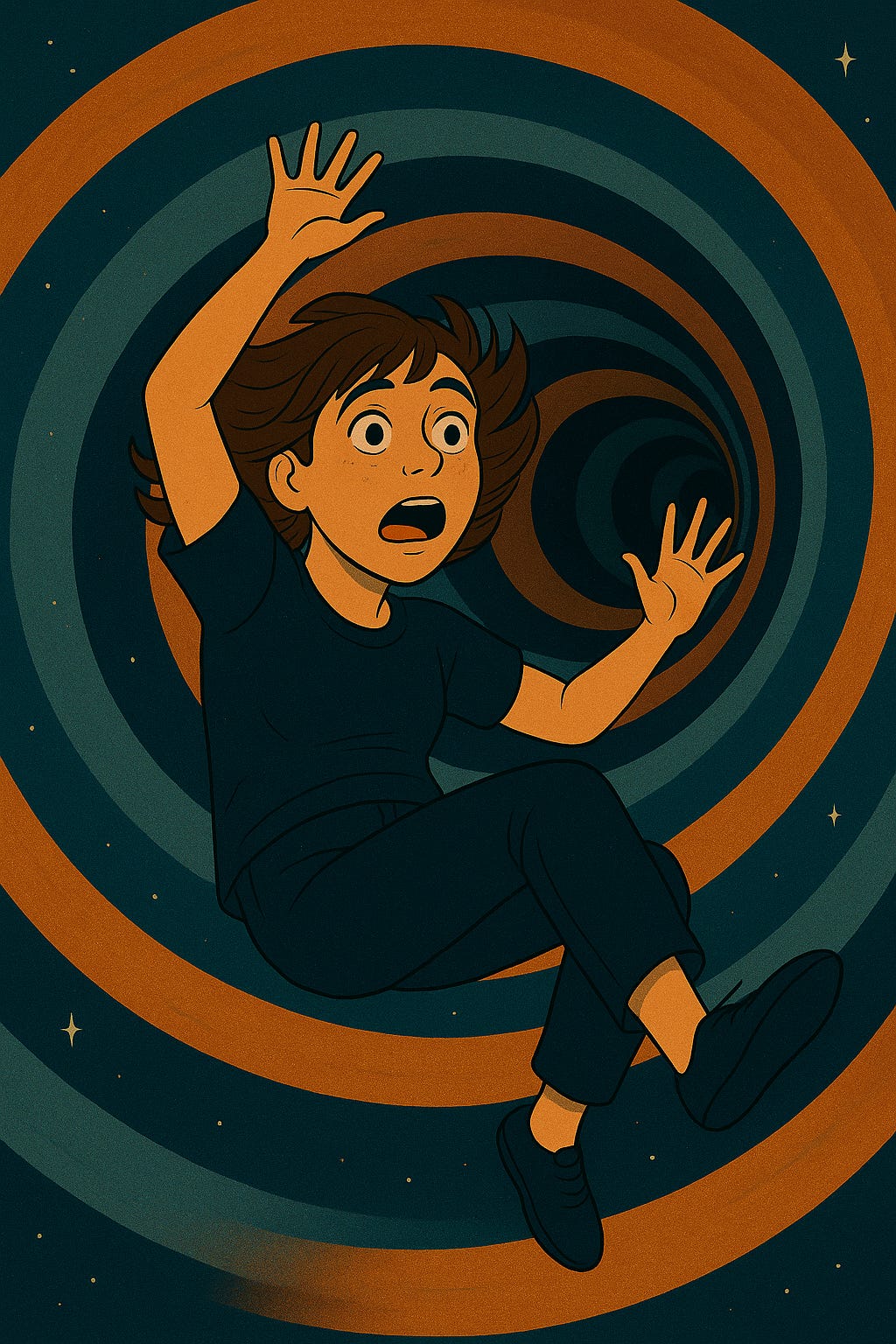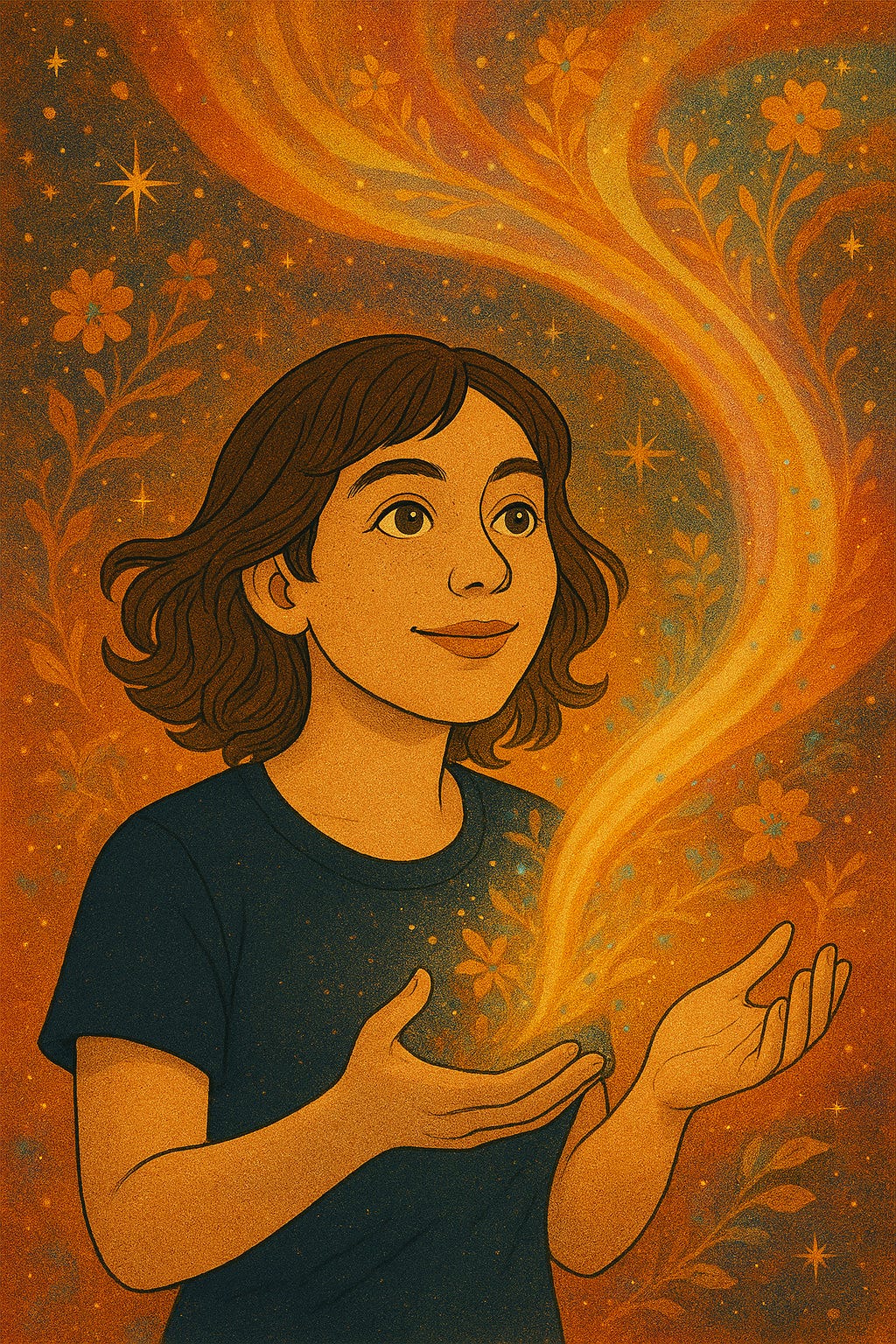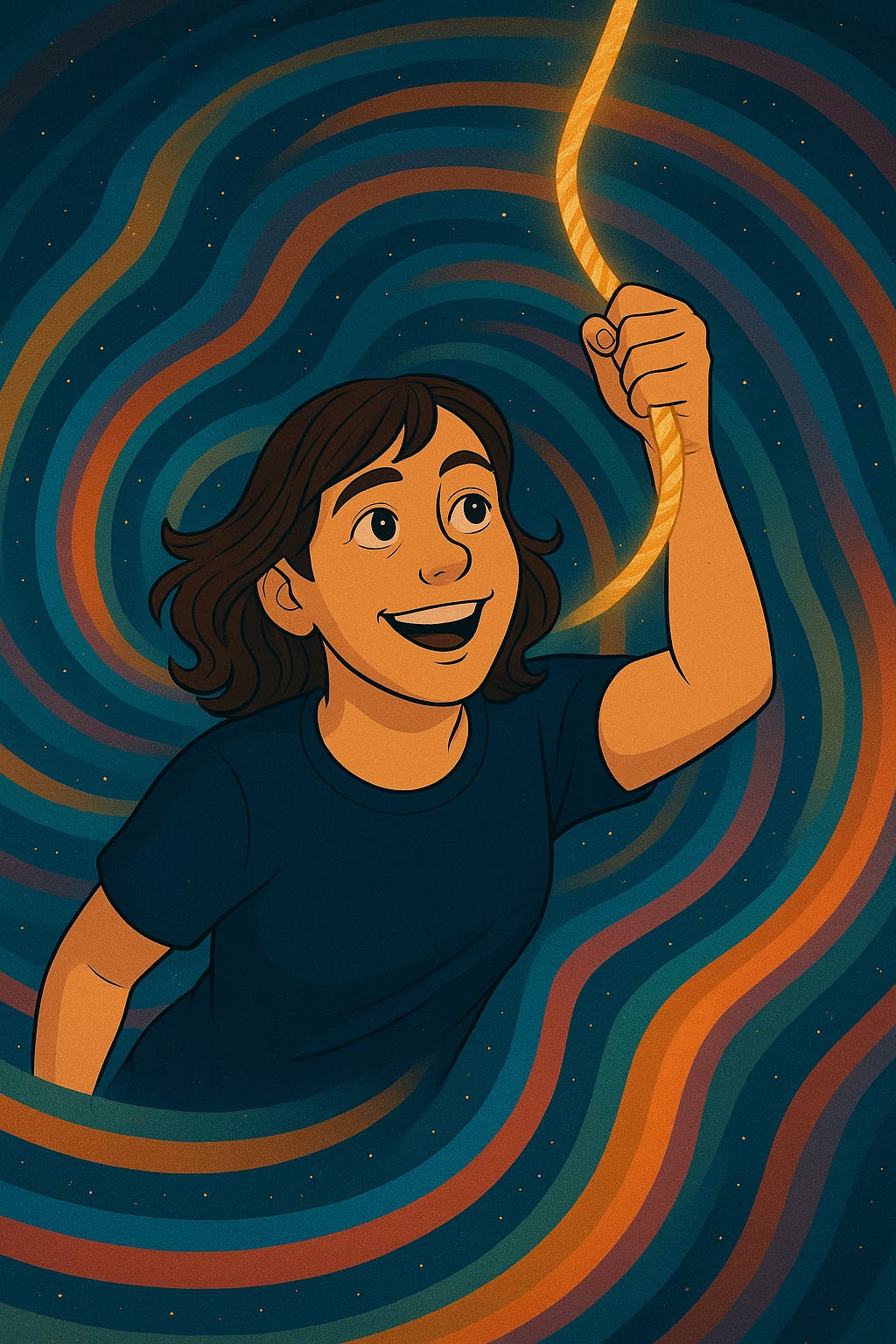When Hyperfocus Hijacks Your Day: The Double-Edged Sword of ADHD Attention
How intense focus can fuel brilliance or derail your plans — and how I’m learning to steer it
The Magic and the Trap
Hyperfocus can be magic — the kind of deep, trance-like attention that pulls you into flow and makes the rest of the world disappear. But it can also hijack your day, keeping you stuck on the wrong thing for hours. Here’s what it feels like, why it happens, and how I’m learning to work with it instead of against it.
When Focus Turns Into a Rabbit Hole
Some days, hyperfocus is my secret weapon. It’s the trance that lets me paint for hours without looking up, the energy that makes me write straight through lunch, the creative high that carries me deep into a project.
But other days, it’s the trapdoor I fall through without realizing it. I might start with something small — replying to an email, fixing a tiny thing on my website, reorganizing a drawer — and suddenly it’s dark outside and I’ve spent the entire day “just” doing that one thing. Except it’s not even the same one thing anymore. I’ll scroll out to fix one tiny piece, notice something else connected to it, and then something else after that. By the end of the day, what started as a minor update has exploded into a major, unplanned project. I didn’t plan it. I didn’t notice the time passing. And when I finally come up for air, I feel wrung out, behind on everything else, and frustrated that the day got swallowed.
The Beautiful, Dangerous Side of Hyperfocus
Sometimes that rabbit hole leads to something amazing — a burst of creativity, a beautiful finished piece of art, or a surprisingly productive outcome. And that’s the tricky part: it’s not all bad. Hyperfocus can create magic. But it can also steal the hours I meant for something else. Without a plan for the day — even a loose one — it’s easy to drift into whatever catches my eye and end up grieving the things I didn’t get to.
That’s why prioritizing each morning (or even the night before) matters so much for me with ADHD. I love the freedom of going wherever my brain wants, but without at least a few anchors, I end up in a mad dash at the end of the day trying to catch up. And it’s not always about sitting at a desk — sometimes it’s a chain reaction, like the day I got a new refrigerator, which somehow led to mopping floors, dusting furniture, and rearranging cupboards. One thing opens the door to another, and before I know it, my day is gone.
What the Experts Say
As Tamara Rosier writes in Your Brain’s Not Broken, ADHD brains are driven more by interest than importance. That means the moment something interesting (or just visually loud) enters my awareness, my focus shifts there — even if my “important” list says otherwise. Ned Hallowell calls this “the superpower and kryptonite of ADHD” in Driven to Distraction — it can fuel brilliant work or derail your plans completely, depending on where the beam lands.
Tools That Help Me Catch It in Time
The trick is catching hyperfocus before the day runs away from you. Here’s what I’m practicing — not all at once, but pulling from this list depending on the day:
Check in: Pause to ask, “Is this still the most important thing for me right now?”
Interrupt gently: Use a timer, phone reminder, or just stand up to break the trance.
Redirect consciously: Choose the next step instead of waiting for focus to shift on its own.
Keep a visual anchor nearby: A whiteboard, sticky note, or list on the fridge or in your workspace where you can see your main priorities at a glance. Checking them off as you go not only keeps you on track, but gives that satisfying hit of accomplishment. It’s a built-in reward system for an ADHD brain.
Use external prompts: Calendar reminders (Google Calendar, phone alerts, or even a watch vibration) that interrupt the tunnel and remind you of the bigger plan.
Body doubling: Work alongside another person — in person or virtually — so there’s a shared rhythm and natural check-ins.
Hyperfocus will probably always be part of my brain’s wiring — and part of my creative process. The goal isn’t to eliminate it, but to guide it. Because when I can point that intense attention toward the right thing, it’s not just productivity. It’s art, it’s momentum, it’s magic.
Recommended Reading
Your Brain’s Not Broken by Tamara Rosier – Practical strategies for working with your ADHD brain rather than against it.
Driven to Distraction by Edward M. Hallowell & John J. Ratey – A classic ADHD resource that dives deep into the patterns, strengths, and challenges of living with ADHD.
ADHD 2.0 by Edward M. Hallowell & John J. Ratey – A modern take on ADHD, exploring interest-based nervous systems, creativity, and tools for thriving.
Next Time: When the Mess Won’t Let You Work
In my next post, I’m diving into the other kind of focus hijack — when it’s not an interesting project that swallows your day, but the state of your environment. From a new fridge delivery to a full-on creative shutdown, I’ll explore why clutter and sensory overwhelm can feel impossible to work through, and how I’m learning to create in less-than-perfect spaces.
Thanks for reading.
If it resonated, feel free to share or reply.
Still me. Still you. Always becoming. 🌿





